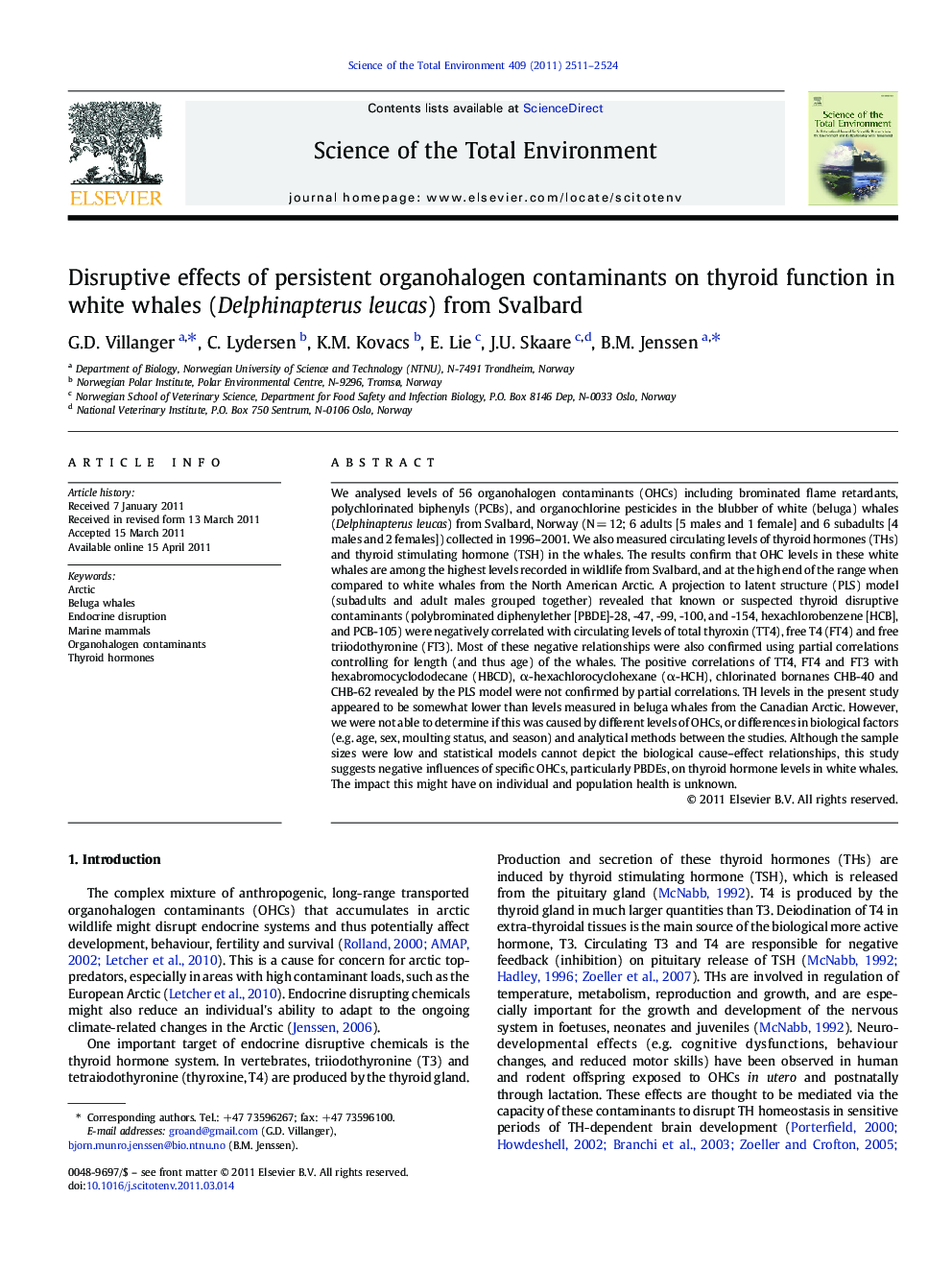| کد مقاله | کد نشریه | سال انتشار | مقاله انگلیسی | نسخه تمام متن |
|---|---|---|---|---|
| 4430136 | 1619849 | 2011 | 14 صفحه PDF | دانلود رایگان |

We analysed levels of 56 organohalogen contaminants (OHCs) including brominated flame retardants, polychlorinated biphenyls (PCBs), and organochlorine pesticides in the blubber of white (beluga) whales (Delphinapterus leucas) from Svalbard, Norway (N = 12; 6 adults [5 males and 1 female] and 6 subadults [4 males and 2 females]) collected in 1996–2001. We also measured circulating levels of thyroid hormones (THs) and thyroid stimulating hormone (TSH) in the whales. The results confirm that OHC levels in these white whales are among the highest levels recorded in wildlife from Svalbard, and at the high end of the range when compared to white whales from the North American Arctic. A projection to latent structure (PLS) model (subadults and adult males grouped together) revealed that known or suspected thyroid disruptive contaminants (polybrominated diphenylether [PBDE]-28, -47, -99, -100, and -154, hexachlorobenzene [HCB], and PCB-105) were negatively correlated with circulating levels of total thyroxin (TT4), free T4 (FT4) and free triiodothyronine (FT3). Most of these negative relationships were also confirmed using partial correlations controlling for length (and thus age) of the whales. The positive correlations of TT4, FT4 and FT3 with hexabromocyclododecane (HBCD), α-hexachlorocyclohexane (α-HCH), chlorinated bornanes CHB-40 and CHB-62 revealed by the PLS model were not confirmed by partial correlations. TH levels in the present study appeared to be somewhat lower than levels measured in beluga whales from the Canadian Arctic. However, we were not able to determine if this was caused by different levels of OHCs, or differences in biological factors (e.g. age, sex, moulting status, and season) and analytical methods between the studies. Although the sample sizes were low and statistical models cannot depict the biological cause–effect relationships, this study suggests negative influences of specific OHCs, particularly PBDEs, on thyroid hormone levels in white whales. The impact this might have on individual and population health is unknown.
Research highlights
► Effects of 56 contaminants on thyroid hormones (THs) in beluga whales were assessed.
► PLS model showed negative and positive influences of contaminants on THs.
► Negative relationships (e.g. PBDEs) were confirmed by correlations corrected for age.
► High contaminant loads in beluga whales causes concern for reductions in TH levels.
Journal: Science of The Total Environment - Volume 409, Issue 13, 1 June 2011, Pages 2511–2524